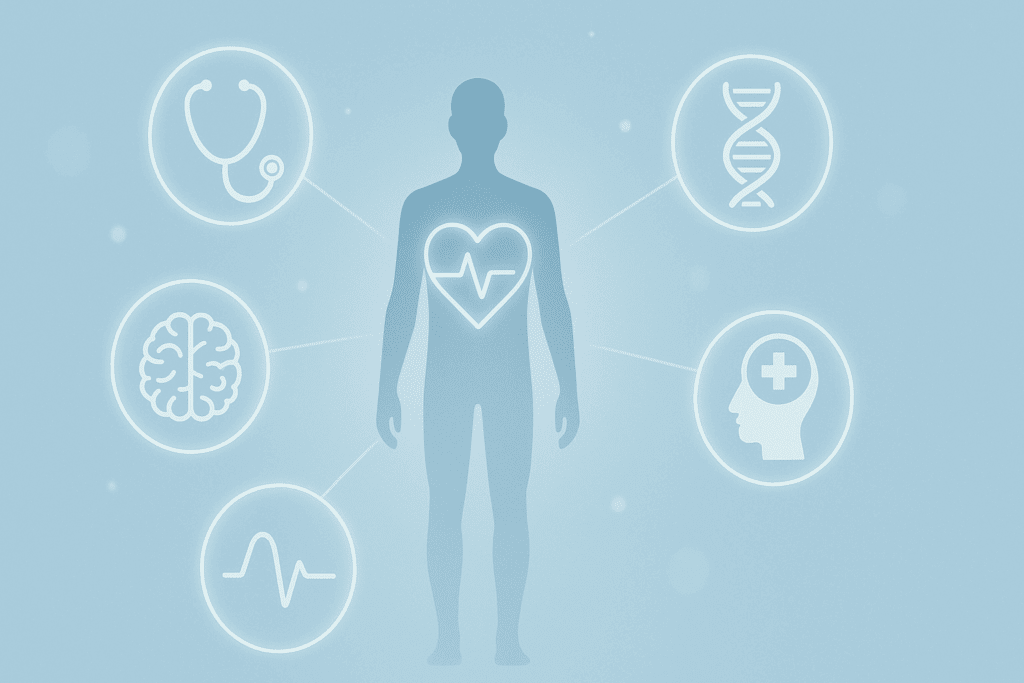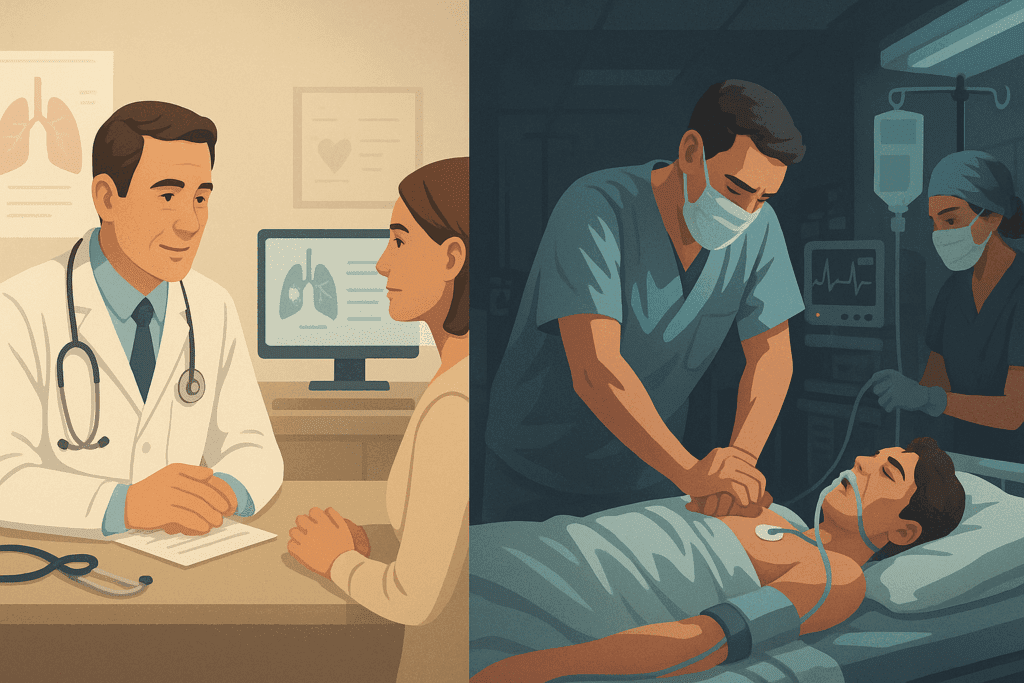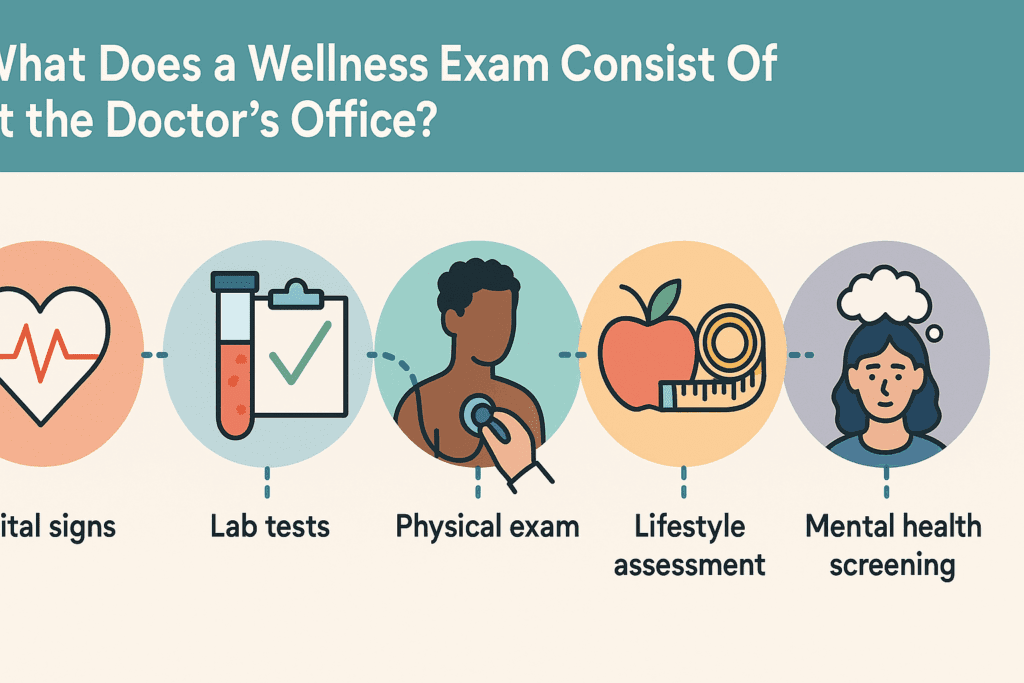In today’s fast-paced world, where chronic illnesses and lifestyle-related conditions are on the rise, understanding what is a wellness screening and why it plays a critical role in preventive health is more vital than ever. A wellness screening is not just a routine check-up; it is a proactive, comprehensive evaluation of your overall health designed to detect early signs of disease, assess risk factors, and empower individuals with the knowledge needed to make informed decisions about their long-term well-being. As public health initiatives increasingly emphasize prevention over cure, wellness screenings serve as a cornerstone for safeguarding health and promoting longevity.
You may also like: The Essential Guide to the Different Types of Screening Tests for Early Detection and Lasting Wellness

Defining What Is a Wellness Screening: The Foundation of Preventive Medicine
To truly grasp the value of wellness screenings, one must first understand what is a wellness screening in both concept and practice. At its core, a wellness screening is a structured series of diagnostic tests, physical assessments, and personal health evaluations that aim to identify potential health issues before symptoms appear. Unlike problem-focused visits that address specific ailments, wellness screenings provide a holistic snapshot of an individual’s current health status. These evaluations are tailored to factors such as age, gender, family history, and lifestyle behaviors, ensuring that each screening is both personalized and relevant.
A wellness checkup often includes measuring vital signs like blood pressure, heart rate, and body mass index (BMI), alongside routine laboratory tests such as lipid panels, glucose levels, and complete blood counts. In many cases, screenings also encompass lifestyle assessments, such as evaluating smoking habits, alcohol consumption, physical activity, and mental health status. The aim is not merely to collect data, but to detect early markers of chronic diseases like hypertension, diabetes, or cardiovascular conditions, often long before clinical symptoms manifest.
The meaning of a wellness checkup extends beyond physical health. Increasingly, mental health evaluations are integrated into screenings to identify early signs of anxiety, depression, or cognitive decline. This comprehensive approach recognizes the interconnectedness of physical, emotional, and psychological well-being, underscoring the importance of early detection in all aspects of health.

Why Early Detection Saves Lives: The Preventive Health Imperative
The true power of wellness screenings lies in their ability to uncover health risks early, when interventions are most effective and outcomes most favorable. Detecting a disease at an early stage can dramatically improve treatment success rates and often reduces the complexity and cost of care. For instance, early-stage hypertension can often be managed with lifestyle changes and minor medication adjustments, whereas advanced cases may lead to irreversible damage or even life-threatening events like stroke or heart attack.
Similarly, annual health screening protocols have played a pivotal role in reducing mortality rates for several types of cancer, including breast, cervical, and colorectal cancer. By identifying precancerous changes or tumors in their nascent stages, screenings open the door to early intervention and, in many cases, a complete cure. This principle holds true across a wide range of conditions, from diabetes and kidney disease to high cholesterol and osteoporosis.
Beyond individual benefits, early detection offers a profound public health advantage. It decreases the overall burden on healthcare systems, lowers hospitalization rates, and reduces the need for intensive treatments. Preventive health strategies, anchored by wellness screenings, ultimately translate into improved population health outcomes, greater healthcare efficiency, and enhanced quality of life.
Breaking Down the Wellness Checkup: What Does a Wellness Exam Consist Of?
Understanding what a wellness exam consists of can help demystify the process and encourage more people to take advantage of these life-saving evaluations. At the heart of every wellness checkup is a detailed review of a patient’s medical history, lifestyle behaviors, and family health background. This discussion provides context for interpreting test results and customizing recommendations.
The physical examination typically includes weight and height measurements, BMI calculation, blood pressure assessment, and examination of the heart, lungs, skin, abdomen, and neurological reflexes. For women, this may include a pelvic exam and Pap smear, while men might receive a testicular exam or prostate screening depending on age and risk factors.
Laboratory tests are central to the wellness screening process. Blood panels often assess cholesterol levels (HDL, LDL, and triglycerides), blood sugar levels, liver and kidney function, thyroid activity, and markers of inflammation. For those with specific risk profiles, more advanced diagnostics like electrocardiograms (EKGs), mammograms, bone density scans, or colonoscopies may be recommended.
The inclusion of immunizations and age-appropriate screenings, such as vision and hearing tests or cognitive assessments for older adults, ensures that wellness exams are comprehensive and age-sensitive. For many, understanding the wellness checkup meaning from a preventive standpoint enhances adherence to regular appointments and follow-up care.

Navigating Costs and Coverage: Are Annual Physicals Free?
A common concern among patients revolves around the financial aspect of wellness screenings. Are annual physicals free? The answer often depends on your health insurance plan and whether the provider adheres to preventive service guidelines set forth by healthcare policy. Under the Affordable Care Act in the United States, most health insurance plans are required to cover certain preventive services, including wellness exams, without charging a copay or deductible.
This means that in many cases, yearly physicals are free to the patient as long as they are classified as preventive and not diagnostic. However, confusion can arise if additional tests or consultations unrelated to routine screening are performed during the same visit. For instance, if a patient raises a new medical concern or undergoes additional diagnostics, they may be charged a copay.
To avoid unexpected bills, patients are encouraged to confirm with their healthcare provider and insurer whether a wellness visit qualifies as an annual health screening and whether any associated services fall under the preventive umbrella. Understanding the nuances of coverage can help answer questions like “Do you pay copay for annual physical?” and “Is there a copay for annual physical?” with greater clarity and confidence.
What Does a Wellness Check Consist Of at the Doctor’s Office?
When patients ask, “What is a wellness check at the doctor?” they are often seeking clarity about the specific procedures and expectations involved. At its core, a wellness check at the doctor’s office serves as a strategic touchpoint for assessing health status, updating medical records, administering necessary immunizations, and reinforcing preventive care goals. These appointments are distinct from visits driven by illness or symptoms; instead, they focus on holistic health maintenance.
Doctors use wellness checkups as opportunities to engage patients in meaningful conversations about nutrition, physical activity, stress management, sleep hygiene, substance use, and other behaviors that influence long-term wellness. The visit may include screenings for depression, alcohol use disorder, or fall risk, especially among older adults. Importantly, these assessments are not intended to diagnose but to guide further evaluation or referrals as needed.
In pediatric populations, wellness checks also involve developmental screenings and immunization updates, while adolescent visits may address sexual health, peer pressure, and mental well-being. For adults, a wellness checkup often includes cancer screenings, such as skin checks or colon cancer risk assessments, depending on age and medical history.
Patients should view wellness visits not as passive encounters but as collaborative experiences. The exchange of information, goal-setting, and shared decision-making are key features of these appointments, making them a critical foundation for lifelong health management.

Understanding the Full Scope: What Does a Wellness Exam Consist Of?
Asking what does a wellness exam consist of reveals the multilayered nature of these evaluations. Beyond the basics of physical examination and routine bloodwork, wellness exams delve into behavioral, emotional, and psychosocial aspects of health. In this way, the exam becomes a comprehensive check-in with the entire human experience—body, mind, and spirit.
For individuals with chronic conditions like asthma, diabetes, or hypertension, wellness exams offer an opportunity to review management strategies, medication adherence, and potential complications. For others, these visits serve as checkpoints for tracking health goals, such as weight loss, smoking cessation, or improved fitness levels.
Physicians may also use wellness screenings to assess vaccination status, review travel health needs, or provide counseling on reproductive health. In some cases, advanced genomic testing or biometric monitoring tools are integrated into the visit, offering personalized insights that guide precision medicine approaches.
Importantly, a wellness exam is not a one-size-fits-all event. The structure and content may vary significantly based on individual risk factors, preferences, and emerging health technologies. This adaptability underscores the evolving nature of wellness screenings as dynamic tools for preventive care.

Yearly Health Screening: A Habit Worth Cultivating
Establishing a routine for yearly health screening is one of the most effective ways to stay ahead of potential medical issues. Consistent annual checkups allow physicians to identify subtle changes in lab values, physical metrics, or behavioral patterns that may signal early disease development. They also create a longitudinal health record that can inform future decisions and enhance care coordination across specialists.
For individuals with busy schedules or competing priorities, the idea of a yearly physical may seem burdensome. However, the time investment is minimal compared to the benefits of early diagnosis and preventive guidance. Moreover, wellness checkups offer a valuable opportunity to ask questions, address concerns, and strengthen the patient-provider relationship—a critical factor in healthcare satisfaction and adherence.
Employers and insurers increasingly recognize the value of regular screenings and often provide incentives, such as reduced premiums or wellness rewards, to encourage participation. Digital health platforms and mobile clinics further expand access, making yearly health screening more convenient and less intimidating than ever before.
The Role of Health Literacy in Interpreting the Wellness Checkup Meaning
Health literacy plays a pivotal role in helping individuals understand the meaning and significance of a wellness checkup. Many patients attend annual exams without fully grasping their purpose or potential. Educating the public on what wellness screenings entail, how they differ from problem-based visits, and what outcomes to expect can enhance engagement and promote adherence to recommended intervals.
Patients who are well-informed are more likely to ask pertinent questions, follow through on referrals, and make lifestyle adjustments based on screening results. Conversely, low health literacy may lead to confusion, fear, or avoidance—undermining the preventive intent of wellness exams.
Clinicians can bridge this gap by using plain language, visual aids, and culturally tailored communication strategies. Empowering patients with the tools to interpret test results, understand risk scores, and track progress over time can transform the wellness exam from a passive procedure into an empowering health journey.

Why Understanding What Is a Wellness Screening Builds Proactive Health Behaviors
Recognizing what is a wellness screening and embracing its role in preventive health fosters a proactive mindset that transcends the doctor’s office. When individuals understand the purpose and benefits of these evaluations, they are more likely to take ownership of their health, adhere to recommended screenings, and adopt behaviors that reduce disease risk.
Preventive mindsets are cultivated through positive reinforcement, education, and system-level support. Healthcare providers who frame wellness screenings as empowering tools rather than obligatory tasks help shift the narrative. Media campaigns, community outreach, and employer-sponsored wellness initiatives can further normalize and promote regular checkups.
A wellness-focused society places value on prevention over cure, on quality of life over reactive treatment. As this cultural shift continues, wellness screenings will evolve to include more personalized, tech-enabled, and data-driven elements, allowing for earlier detection, targeted interventions, and more equitable access to care.
Health and Wellness Check Up as a Gateway to Personalized Care
At the intersection of early detection and individualized care lies the health and wellness check up—a foundational encounter that shapes the trajectory of one’s medical journey. When conducted thoroughly and followed up with personalized recommendations, these visits become powerful catalysts for change.
The insights gained during wellness exams can guide patients toward tailored fitness programs, dietary modifications, stress reduction techniques, or mental health services. For high-risk populations, such as those with a family history of cancer or heart disease, screenings may trigger genetic counseling or more frequent monitoring.
Healthcare is increasingly moving toward precision medicine, where interventions are based not only on generalized guidelines but also on genetic, environmental, and lifestyle factors. In this context, a wellness checkup meaningfully contributes to a more responsive, adaptive, and patient-centered model of care. It invites dialogue, nurtures trust, and encourages shared responsibility for long-term outcomes.
Frequently Asked Questions: What Is a Wellness Screening and How It Supports Preventive Health
How can a wellness screening influence long-term health planning?
A wellness screening acts as a strategic health checkpoint that informs long-term personal and clinical decision-making. When conducted consistently, it reveals patterns in metrics like blood pressure, cholesterol, and glucose levels, which may not raise concern on their own but can signal a cumulative risk when viewed over time. For example, a slight year-over-year increase in fasting glucose could guide a patient to adopt dietary changes before diabetes develops. This kind of proactive insight supports early intervention and lifestyle redesign, which are key to avoiding the high costs—both financial and personal—associated with managing chronic diseases later in life. A regular health and wellness check up also empowers individuals to set measurable goals and track progress in areas such as mental well-being, physical fitness, and weight management.
Are yearly physicals free under most insurance plans, and what should I clarify beforehand?
In many cases, yes, but there are critical nuances. Under the Affordable Care Act, most insurance providers are required to cover an annual health screening at no cost to the patient if it’s categorized strictly as preventive. However, if the wellness checkup involves discussing new symptoms, managing chronic conditions, or running additional diagnostics unrelated to the annual evaluation, you might be responsible for a copay or deductible. Patients should clarify beforehand whether any planned services fall outside the scope of preventive care. Asking your provider about the billing code used for the appointment can help ensure you’re receiving a covered wellness checkup, avoiding any surprise out-of-pocket expenses.
What does a wellness exam consist of beyond the standard physical check?
Beyond the expected checks of blood pressure, heart rate, and BMI, a wellness exam may include advanced lab panels and in-depth lifestyle discussions. For example, newer practices incorporate stress assessments, nutritional counseling, and sleep evaluations to paint a more holistic picture of health. Some clinics use behavioral health surveys or include screening for conditions like sleep apnea or vitamin deficiencies. Increasingly, wellness checkup meaning has expanded to include wearable data analysis—such as metrics from fitness trackers—to evaluate physical activity and heart rate variability trends. This integration of tech can offer real-time insights that are more reflective of your daily habits than a single in-office snapshot.
What is a wellness check at the doctor, and how should patients prepare?
A wellness check at the doctor is typically an annual appointment dedicated to preventive health, not treatment of acute or ongoing conditions. To make the most of it, patients should bring a list of current medications, supplements, and any recent symptoms, even if they seem minor. Preparation also means knowing your family health history, as this can influence what screenings are recommended during your yearly health screening. Bringing previous lab results or vaccination records helps your doctor assess trends over time. Finally, preparing questions in advance ensures you actively participate in shaping your preventive health strategy, making the most of the face-to-face consultation.
Is there a copay for annual physical appointments in real-world scenarios?
In ideal circumstances, no—but in practice, it depends on how the visit unfolds. If your annual health screening remains focused on preventive care, then the visit is often fully covered. However, if the physician documents additional evaluations or if you bring up symptoms that require diagnosis, the appointment may be partially reclassified as a diagnostic visit. This may result in a charge, raising questions like “Do you pay copay for annual physical?” or “Is there a copay for annual physical services not covered by preventive guidelines?” Always ask your provider beforehand how services will be coded. Being proactive about this can help you navigate billing and insurance complexities effectively.
Why is understanding what a wellness screening is essential for younger adults?
While many younger adults believe they don’t need routine checkups, understanding what is a wellness screening can shift this perception. Early adulthood is when lifelong health habits are formed, and screenings at this stage can identify high-risk behaviors or genetic predispositions before they evolve into chronic issues. For example, early cholesterol checks in your 20s can reveal familial hyperlipidemia that might otherwise go unnoticed. The wellness checkup meaning for younger demographics includes identifying areas for improvement before damage accrues, enabling preventive guidance while there is still significant room to pivot toward healthier outcomes. It’s not just about detecting problems—it’s about designing a foundation for a healthy life.
How does a wellness screening support mental health awareness?
Mental health is increasingly being integrated into what a wellness exam consists of, reflecting a broader understanding of holistic well-being. Screenings may now include standardized tools like the PHQ-9 or GAD-7 to assess depression and anxiety. These tools help initiate important conversations, particularly in populations that might be reluctant to seek mental health support. The annual health screening is a low-pressure setting where emotional health can be addressed alongside physical metrics. Even mild mood symptoms can prompt early interventions, such as therapy referrals or stress management coaching, preventing escalation into more serious mental illness.
What does a wellness check consist of for aging populations, and why does it evolve?
For older adults, the scope of what does a wellness check consist of changes significantly to reflect age-specific risks. In addition to typical screenings for blood pressure and diabetes, physicians may conduct cognitive assessments, fall-risk evaluations, and bone density scans. Discussions often turn to mobility, medication interactions, and end-of-life planning—topics that may not be addressed during younger years. There’s also a stronger emphasis on vaccinations like shingles or pneumococcal pneumonia. The evolving nature of a wellness checkup ensures that preventive care remains aligned with age-appropriate risks and life transitions.
Clarifying the Wellness Check Meaning: Doctor Perspectives on Emerging Trends
From a clinical standpoint, the wellness check meaning doctors embrace today extends beyond static snapshots of health. Physicians are increasingly integrating social determinants of health into their assessments—such as housing security, access to nutritious food, or community support. These factors are now recognized as critical components of preventive health strategies. Some providers are adopting community-based outreach models to reach patients who face barriers to traditional care. Others use telehealth platforms to conduct portions of the wellness checkup remotely, improving access and compliance while maintaining thoroughness.
What is a wellness screening’s future role in digital healthcare ecosystems?
The future of what is a wellness screening lies in its integration with digital ecosystems that offer predictive analytics and continuous monitoring. Tools like AI-powered diagnostic algorithms, at-home lab testing kits, and wearable biosensors are revolutionizing how and when data is collected. These tools allow for a more dynamic and responsive form of yearly health screening, where emerging risks can be flagged in real time rather than once a year. Healthcare providers will increasingly use dashboards to monitor these metrics between appointments, enabling interventions before formal symptoms arise. As personalization and technology advance, wellness screenings will become increasingly adaptive, targeted, and data-informed—reshaping preventive health into a continuous rather than episodic process.
Conclusion: Embracing the Power of What Is a Wellness Screening for Lifelong Health
As we navigate a world filled with health challenges and opportunities, embracing the full value of what is a wellness screening represents a commitment to informed, proactive, and empowered living. These screenings are not just medical appointments; they are critical intersections of science, self-awareness, and strategic prevention that enable individuals to stay ahead of illness and thrive across the lifespan.
By understanding what does a wellness exam consist of and recognizing that annual health screenings can reveal silent yet serious risks, we move from passive recipients of care to active participants in our well-being. The question “Are annual physicals free?” becomes not just a financial inquiry but a gateway to understanding the broader accessibility and importance of preventive care. When we ask, “What does a wellness check consist of?” or “Is there a copay for annual physical?” we are engaging in the kind of informed questioning that fosters better outcomes, stronger healthcare partnerships, and more sustainable systems.
Ultimately, preventive health is not a one-time effort but a lifelong journey. Regular wellness checkups, grounded in science and shaped by compassionate care, empower us to lead healthier, more resilient lives. They remind us that early detection is not just a medical advantage—it is a profound act of self-respect and responsibility, ensuring that we remain present, vibrant, and capable in the years ahead.

